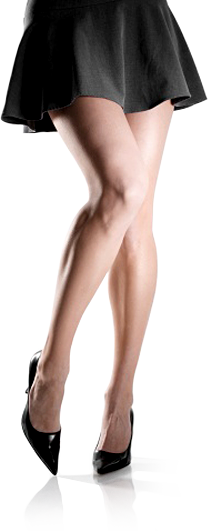Midwest Vein Care of St. Louis offers a variety of treatment options for vein disorders. If you suffer from spider or varicose veins and are unhappy with your appearance or are living with pain, itching or discomfort, please know that solutions are available.
Our office provides effective pre-screenings of the legs so that we can:
- Clarify if special treatment is needed
- Set up a treatment plan
- Detect if there is a deeper health issue to address
Let’s discuss the three main conditions of the legs…
Spider Veins are small, dilated blood vessels, which form near the surface of the skin. These unsightly veins appear as if a child has taken a pen to your skin and scribbled. Spider veins also have a lack of oxygen, which can cause them to itch and burn. As the condition worsens, a cluster of spider veins often results in pain and swelling of the leg.
Varicose Veins are the enlarged and torturous veins seen on legs. The condition is caused by a valve defect, which allows blood to flow backwards. Not only are varicose veins even more unsightly than spider veins, they are also intensely more painful. If standing pain worsens and the condition is allowed to persist, the veins can lead to severe side effects such as leg swelling, venous eczema, skin thickening, and ulceration.
Deep Vein Thrombosis is a blood clot that occurs in one or more deep veins in your body. Varicose veins are often confused with deep vein thrombosis, but it’s important to know the difference. Deep vein thrombosis can cause massive swelling of the leg without the visible pen effect of spider veins or the bulge of varicose. If you’re not sure of the difference, it’s important you have a vein screening so we can put your mind at ease.
What’s Next?
At Midwest Vein Care, we offer multiple safe and effective treatment techniques for vein disorders. You don’t have to continue living with pain, discomfort, and unsightliness in your legs. Our many services include injections with sclerotherapy, laser removal, retractions with phlebectomy, and others.
Spider and varicose veins can exist in different severity.
Vein screenings allow us to determine the severity of your condition and discuss the best options.
Midwest Vein Care offers free vein pre-screenings of the legs in physicians’ offices all around the St. Louis area. We also conduct more in-depth screenings in our office.
We hope you’ll join us for our free Vein Health Event on August 14th to learn more about the importance of vein screenings. You are also welcome to call our office to schedule a consultation at your convenience.


